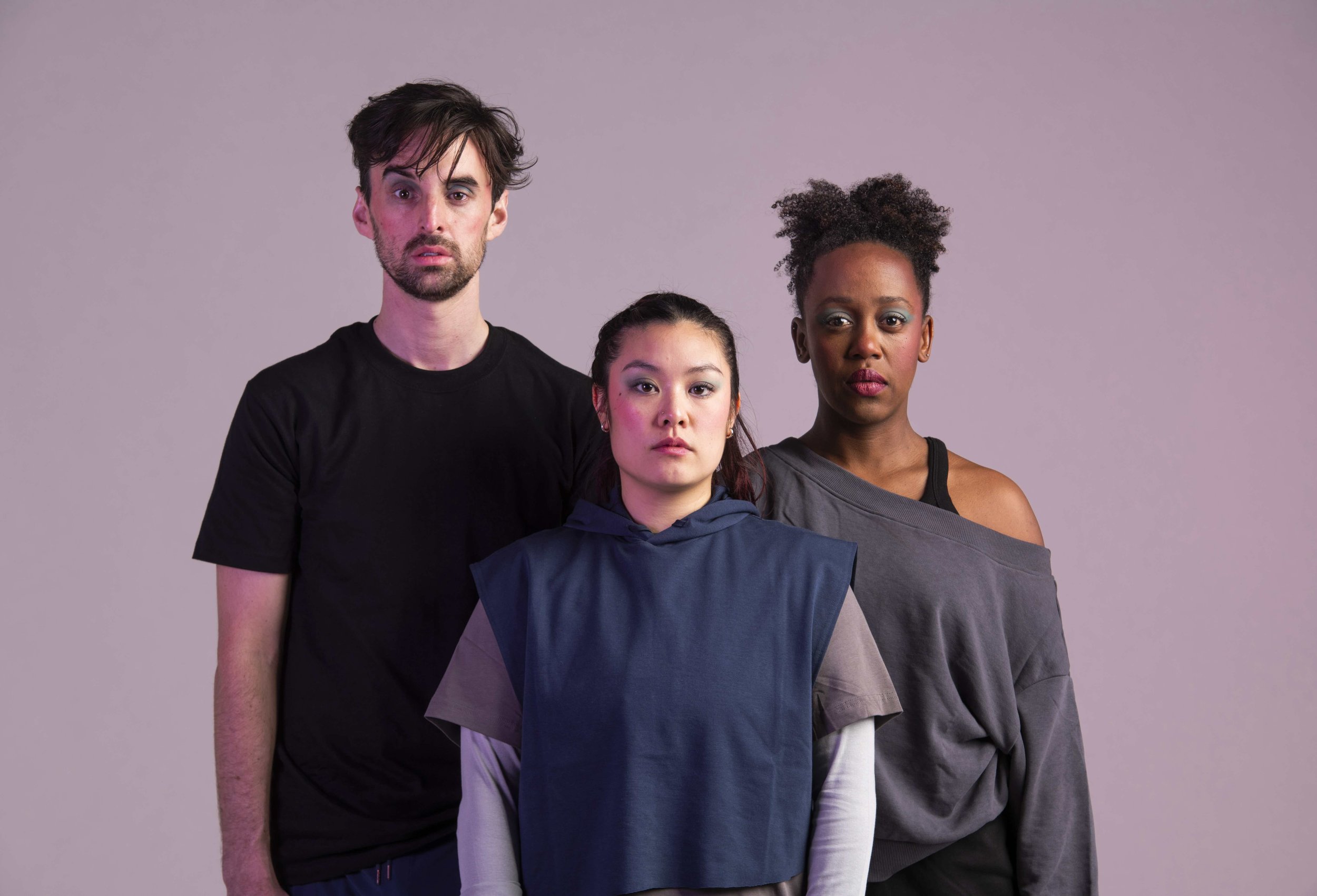With Otosan, Shizuka Kai draws on personal story of wildlife-videographer father with artful puppets
The designer has spent five years building the Vancouver International Children’s Festival show with Little Onion Puppet Co.
Otosan’s puppets. Photo by Erin Palm
Vancouver International Children’s Festival presents Little Onion Puppet Co.’s Otosan at The Nest from May 28 to June 2
TABLETOP PUPPETS, WILDLIFE footage and projected animations tell the story of a young girl trying to connect with her father, a dedicated Japanese videographer, in Otosan.
Based on the life and memories of Vancouver-based puppeteer and set designer Shizuka Kai, the father-daughter puppet duo finally start to understand each other after little Shizu sneaks into her no-nonsense dad’s suitcase on a wildlife videography trip, and they face challenges—and a grizzly—together.
Kai explains that she wanted to showcase the tricky relationship she and others have with their fathers who don’t fit the Western description of dad.
“He’s a very traditional (Japanese) dad, he doesn't say very much, he grunts, that's how he talks, he doesn’t show affection,” the artist tells Stir, of Vancouver International Children’s Festival show. “There’s love there, but it’s not huggy; it’s a different kind of love.”
Co-creators Kai, Randi Edmundson, and Jess Amy Shead have been workshopping the show for five years, and the puppets have been built—and rebuilt—to be maneuverable and expressive.
In tabletop puppetry, the puppeteers are often in view, and the characters and creatures are controlled by rods, hands, or other mechanisms.
The cartoonish, needle-felted puppets were originally made of mostly wood and clay, but a new set of puppets features in this production. They have been scaled up in size and made more durable with some 3D-printed elements swapped in—such as hands, which typically break easily.
That change came about when, about a week out from the show, one of the Otosan puppets’ legs broke unexpectedly.
“We were like, ‘What are we going to do? This is going to take us a long time to fix, because we’d have to rebuild that out of wood and we don't have time for that,’” Kai says.
Thankfully, they were able to 3D-print an exact replica of the piece, and swapped out both legs so the puppet wouldn’t be off-balance.
“We were laughing, because they’re slowly turning into a little cyborg,” Kai says.
Any changes like these means relearning how to control their movements.
“How I puppeteer him changes, because before I had more weight on his legs, so if I was to use the mechanism and swing him, he kind of walked pretty easily, but now I have to give him a little bit more,” she says.
The puppets are also often controlled by two puppeteers at the same time, depending on whether they are holding a prop, like Otosan’s camera and tripod.
A snowy owl created by Stephanie Elgersma, who designed all of the animal puppets that Shizu and Otosan encounter, has a complex flying mechanism built in so it can flap its wings, then tuck its wings away.
The puppets are all very expressive in their movements—and they have to be, with no dialogue in the show.
It was easy enough to create the show without text, because her father didn’t speak very much, Kai explains, but this would also mean the story would be understandable anywhere in the world, and more accessible.
“We’ve been trying to make our show a little bit more Deaf and hard-of-hearing ‘forward’ than ‘friendly’,” says Kai.
The team worked with Deaf theatre consultants and community liaisons to make sure the story can be followed just the same without hearing.
When a character burps, for example, it’s shown in the puppet’s body movements instead of through sound—easy enough because, for some, a burp is just a feeling, Kai explains.
Otosan. Photo by Erin Palm
Visual animations and videos are also projected onto a screen behind the puppets.
When the father puppet points his prop camera at an animal puppet, for example, real-life footage of the same subject taken by Kai’s father is shown on the lens-shaped screen. Snowy owls and white wolves are just some of the creatures that appear in the production.
Kai says her biggest goal is for people to walk away from the show loving puppetry.
“I would like for them to walk away feeling exhilarated by seeing these crazy animals and this crazy story,” she says, adding that her goal is that Shizu and Otosan resonate with the audience.
“I hope some of the kids walk away feeling like ‘Oh, yeah, that's kind of like my relationship with my dad,’” she says.
After the Vancouver International Children’s Festival, Kai says the group is aiming to tour within B.C., then in other Canadian provinces and internationally in the coming years. ![]()















